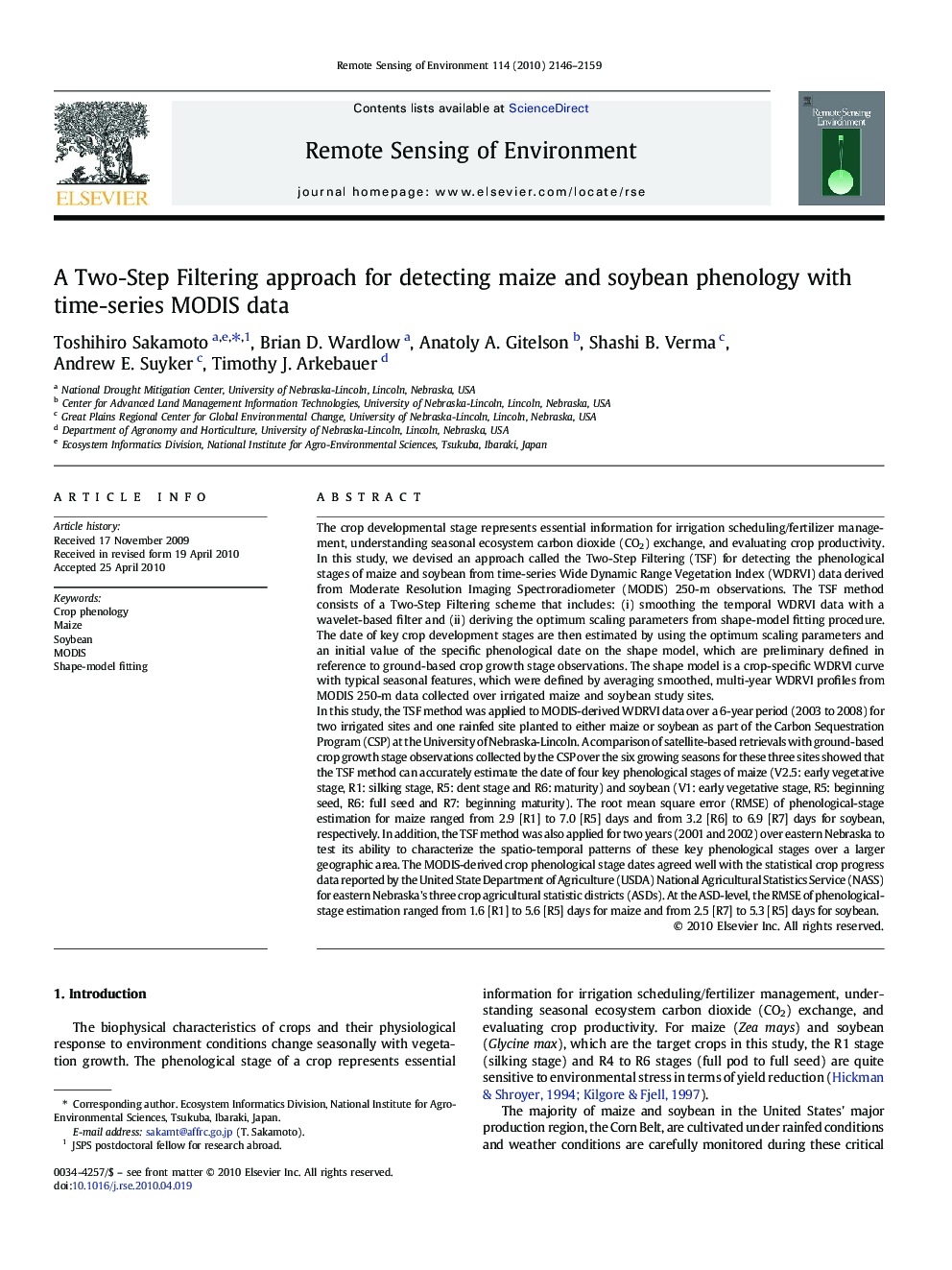| کد مقاله | کد نشریه | سال انتشار | مقاله انگلیسی | نسخه تمام متن |
|---|---|---|---|---|
| 4459608 | 1621299 | 2010 | 14 صفحه PDF | دانلود رایگان |

The crop developmental stage represents essential information for irrigation scheduling/fertilizer management, understanding seasonal ecosystem carbon dioxide (CO2) exchange, and evaluating crop productivity. In this study, we devised an approach called the Two-Step Filtering (TSF) for detecting the phenological stages of maize and soybean from time-series Wide Dynamic Range Vegetation Index (WDRVI) data derived from Moderate Resolution Imaging Spectroradiometer (MODIS) 250-m observations. The TSF method consists of a Two-Step Filtering scheme that includes: (i) smoothing the temporal WDRVI data with a wavelet-based filter and (ii) deriving the optimum scaling parameters from shape-model fitting procedure. The date of key crop development stages are then estimated by using the optimum scaling parameters and an initial value of the specific phenological date on the shape model, which are preliminary defined in reference to ground-based crop growth stage observations. The shape model is a crop-specific WDRVI curve with typical seasonal features, which were defined by averaging smoothed, multi-year WDRVI profiles from MODIS 250-m data collected over irrigated maize and soybean study sites.In this study, the TSF method was applied to MODIS-derived WDRVI data over a 6-year period (2003 to 2008) for two irrigated sites and one rainfed site planted to either maize or soybean as part of the Carbon Sequestration Program (CSP) at the University of Nebraska-Lincoln. A comparison of satellite-based retrievals with ground-based crop growth stage observations collected by the CSP over the six growing seasons for these three sites showed that the TSF method can accurately estimate the date of four key phenological stages of maize (V2.5: early vegetative stage, R1: silking stage, R5: dent stage and R6: maturity) and soybean (V1: early vegetative stage, R5: beginning seed, R6: full seed and R7: beginning maturity). The root mean square error (RMSE) of phenological-stage estimation for maize ranged from 2.9 [R1] to 7.0 [R5] days and from 3.2 [R6] to 6.9 [R7] days for soybean, respectively. In addition, the TSF method was also applied for two years (2001 and 2002) over eastern Nebraska to test its ability to characterize the spatio-temporal patterns of these key phenological stages over a larger geographic area. The MODIS-derived crop phenological stage dates agreed well with the statistical crop progress data reported by the United State Department of Agriculture (USDA) National Agricultural Statistics Service (NASS) for eastern Nebraska's three crop agricultural statistic districts (ASDs). At the ASD-level, the RMSE of phenological-stage estimation ranged from 1.6 [R1] to 5.6 [R5] days for maize and from 2.5 [R7] to 5.3 [R5] days for soybean.
Journal: Remote Sensing of Environment - Volume 114, Issue 10, 15 October 2010, Pages 2146–2159